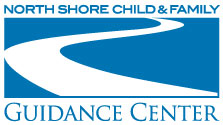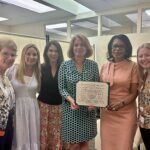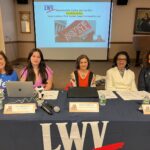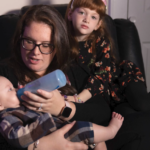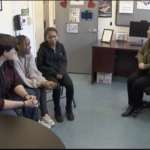One of COVID-19’s worst complications for nonprofits is the decimated events calendar. Galas and luncheons – nonprofits’ biggest fundraising vehicles – simply don’t exist in the age of social distancing.
Take North Shore Child & Family Guidance Center in Roslyn Heights. The organization looks to three events each year to bring people together, and collectively raise about $700,000.
There’s a lot that may ride on timing going forward.
“Our gala in October is our biggest fundraiser, but in addition to safety, would this be the right time to have that kind of celebration?” said Andrew Malekoff, executive director of North Shore Child & Family Guidance Center in Roslyn Heights.
For organizations like North Shore Child & Family Guidance that means regrouping in order to reach donors and to continue to provide services to communities, many of which are in crisis, and may need them now more than ever.
“It’s a tricky balance because we’re all headed into a lot of uncertainty,” said Jeff Reynolds, president and CEO of Family & Children’s Association in Mineola.
At the same time, there’s a “spike in client demand and needs in the community” and with loss of tax revenue caused by the “New York Pause,” there are “signs that the county is heading into a rough time,” he said.
Now, resiliency matters.
FCA, which has been around for 135 years, has weathered plenty of storms – among them, two world wars, a depression, devastating hurricanes, 9/11 and several recessions. In all that time “we never closed – we’re still responding and answering the call today,” Reynolds said.
And a dose of ingenuity helps.
Persevering through COVID-19 and its shock to the economy requires a host of strategies. Communications skills, solid relationships and a tight team all come into play, experts say. And the powers of video conferencing and social media may forever change the fundraising and awareness-raising landscape.
Perhaps most powerful are the one-to-one relationships.
Reynolds likes to reach out to donors and say “How’re you doing? Here’s what we’re doing, just so you’re up to date.”
In these conversations, speak honestly and openly, and state what your needs are, whether it’s a $25 donor or a $25,000 donor, Reynolds said.
The conversations should be extended to the organization’s full board, budget committees, steering committees and other key stakeholders. These dialogs are essential, especially for organizations awaiting funding at the county, state or federal level.
Since COVID-19, board and committee members all had to be accessed to inform “what we were looking at – real concerns about the viability of going forward and being able to meet payroll because of reduced cash flow,” Malekoff said.
“For not-for-profits struggling at the moment, the board is their asset,” said Kerry Gillick Goldberg, a public relations and non-profit expert. She recently launched Baby Essentials of Long Island, with Docs for Tots as a fiscal sponsor, to help families in need. “The executive director has to be in constant contact with the board. It’s the board’s responsibility to assist at that moment.”
That assistance can be financial, but also in-kind services in the form of expertise, goods and even introductions, experts say.
Internal matters
Take a close look within your own organization, which may also be in need of repair. Some are coping with the stresses around employees and board members who contracted the virus. Others are rebounding in a new work-from-home environment where there may be additional pressures. Many have staff cuts, layoffs and furloughs even if there are more people now need their services. Still others are expending energy differently thanks to technology.
Organizations in need of funds should look immediately to available resources. These include programs through the CARES Act, including the Paycheck Protection Program, employee retention credit and other opportunities.North Shore Child & Family Guidance, for example, now relies on telehealth to provide services and meet growing demand, at a time when there are fewer appointment cancellations; the bright spot here is a boost to billing. And while there are challenges to make sure everyone can access the technology, an important component was reaching out “to all of the families we work with” to let them know “we are not abandoning them” and that there’s “another way to be in touch with them and continue the work that we do,” Malekoff said.
The tools you have
Make use of the tools you have, experts say. Seeing program cuts, along with supply shortages, as well as knowing people had lost jobs, Gillick Goldberg took to social media to address the need for diapers, baby food and more to help those who could no longer provide for their young families. That got the attention of local media, helping to prompt donations, including diapers, wipes and formula from Long Island Cares, she said.
But while Gillick Goldberg’s circle of media connections can help get donations, “everybody has the ability” to locate the assistance needed, she said. “I’m not embarrassed to ask for help and say please.”
That determination came in handy when Gillick Goldberg was trying to score hard-to-find size-5 diapers.
Finally, “I got lucky when this new store, Warehouse Liquidation Center, in Plainview, heard what I was doing, and took pity and donated boxes of diapers,” she said.
Looking to the expertise of a larger organization can help. For instance, Island Harvest Food Bank is partnering with 288 community-based non-profit organizations, 32 school districts, the Suffolk County Executive’s Office, the Nassau County Department of Health, and Nassau and Suffolk County veterans organizations. The organization said it is working with local, state, and federal government officials, community-based organizations and others to offer guidance and provide food across Long Island.
A new era
How nonprofits raise funds and build community may be changed at least temporarily.
Some are considering virtual galas, where donors view a streaming performance of a musical performance or comedian. Others include a fundraising challenge, or even a virtual mahjong fundraiser.
“I don’t know that this will catch on the way people think it might,” Reynolds said.
Still, a virtual event might not ever replace a golf outing. But produced thoughtfully, complete with thoughtful videos, a virtual event might fill in the gap for a scholarship event. Reynolds said it might be compelling to tell donors “I’m not asking you to come to a breakfast where you spend $100 on eggs. Instead, take that $100 to help a kid get an iPad and go to Nassau Community College.”
In a landscape that has long been dotted with charitable events, “maybe it’s time for a reset button,” he said.
By Adina Genn. Adina covers law and government for Long Island Business News. She can be reached via email at agenn@libn.comor at (631) 913-4241.
